Are you struggling with hair loss? Topical finasteride is a medication that is used to treat hair loss in men and women. It is a topical version of the oral medication finasteride, which works by blocking the conversion of testosterone to dihydrotestosterone (DHT), a hormone that contributes to hair loss. It's also one of the two FDA-approved hair loss treatments. In this article, we'll explore the benefits of topical finasteride, how to use it, and any potential side effects to be aware of. Whether you're a long-time finasteride user or just considering it for the first time, read on to learn more about this game-changing hair loss solution.
What is topical finasteride and how it works
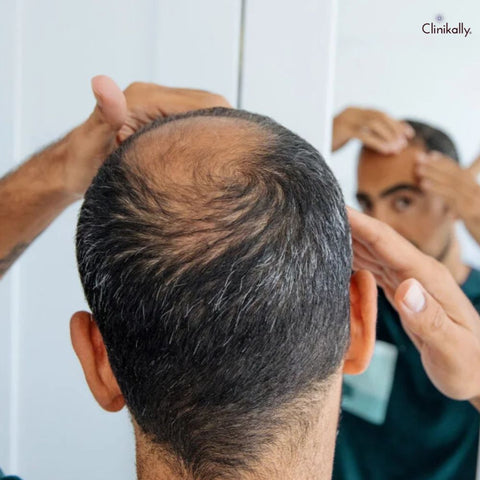
Finasteride is a drug commonly used to treat male pattern baldness (androgenic alopecia). It works by inhibiting the activity of an enzyme known as 5-alpha-reductase, which converts testosterone into dihydrotestosterone (DHT), a hormone that can cause hair loss.
Topical finasteride is a newer formulation of the drug that is applied to the scalp rather than taken orally. The idea behind topical finasteride is to reduce the risk of side effects associated with the oral form, such as sexual dysfunction, by limiting the drug's systemic absorption.
When applied topically, finasteride is believed to work by inhibiting 5-alpha-reductase activity in the hair follicles themselves, which can help to reduce levels of DHT and promote hair growth. Because it is a newer formulation, there is still ongoing research to fully understand its efficacy and safety. However, some early studies have suggested that topical finasteride may be just as effective as the oral form in treating male pattern baldness, while potentially minimizing side effects.
Understanding the mechanism of action of topical finasteride for hair loss

Topical finasteride, like its oral counterpart, works by inhibiting the enzyme 5-alpha-reductase. This enzyme is responsible for converting testosterone into dihydrotestosterone (DHT), a more potent androgen hormone. DHT is implicated in miniaturization of hair follicles in individuals genetically predisposed to androgenetic alopecia (male pattern baldness).
By inhibiting 5-alpha-reductase, finasteride reduces the levels of DHT in the scalp tissue. This helps to counteract the shrinking of hair follicles and prolongs the growth phase of the hair cycle, leading to thicker and healthier hair.
Topical finasteride is believed to have a localized effect on the scalp, minimizing systemic exposure and potential side effects that can occur with oral finasteride. This makes it a promising option for individuals who may be concerned about systemic side effects but still wish to benefit from the therapeutic effects of finasteride for hair loss.
Exploring the scientific research supporting the efficacy of topical finasteride

Scientific research demonstrating the efficacy of topical finasteride for hair loss has accumulated over time. Here are some major studies that demonstrate its usefulness, including: A recent study published in the Journal of Dermatological Treatment examined the efficacy and safety of topical finasteride at two different concentrations (0.5% and 1%). Both concentrations were shown to be beneficial in increasing hair growth, with the 1% dose exhibiting slightly better outcomes. The treatment was well tolerated, with no significant side effects noted. These trials provide evidence for topical finasteride's efficacy and safety in the treatment of male pattern hair loss. However, further research may be required to determine its long-term efficacy and safety profile.
Topical finasteride vs oral
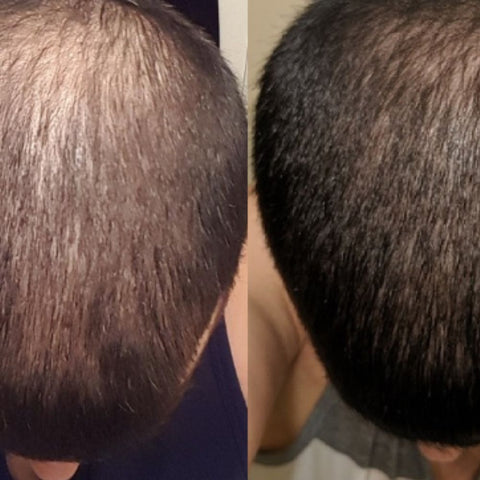
Finasteride, whether topical or oral, is an effective treatment for hair loss, particularly androgenetic alopecia. However, they differ in several ways, including efficacy, side effects, and application method. Here is a comparison between the two.
-
Efficacy: Both topical and oral finasteride inhibit the enzyme 5-alpha-reductase, reducing testosterone conversion to dihydrotestosterone (DHT). By lowering DHT levels, both treatments help to slow down hair loss and promote hair regrowth. Clinical trials have shown that both formulations can effectively treat male pattern hair loss, with some evidence suggesting that oral finasteride may be slightly more effective.
-
Side Effects: Systemic side effects of oral finasteride include decreased libido, erectile dysfunction, and tender breasts. These side effects result from the systemic inhibition of DHT throughout the body. In contrast, topical finasteride is thought to have a more localised effect on the scalp, resulting in lower systemic absorption and possibly fewer systemic side effects. However, some people may still experience local side effects such as scalp irritation or itching after topical application.
-
Application: Finasteride is taken orally as pills, usually once a day. Topical finasteride is applied directly to the scalp, typically as a foam or solution. It may need to be applied every day or every other day. The decision between oral and topical formulations may come down to personal taste, ease of use, and side effect tolerance.
-
Systemic Absorption: Topical finasteride has a lower systemic absorption and mainly affects DHT levels in the scalp tissue, whereas oral finasteride is absorbed systemically and can affect DHT levels throughout the body. Topical finasteride might be a better choice for people who are worried about systemic side effects because of its localised action.
-
Long-term Safety: The long-term safety profiles of topical and oral finasteride have been investigated. While topical finasteride's long-term safety is still being assessed, oral finasteride has been used for many years and has a well-established safety profile. Nonetheless, preliminary research indicates that topical finasteride might have a good safety profile, especially when it comes to reducing systemic side effects.
Topical finasteride and minoxidil spray
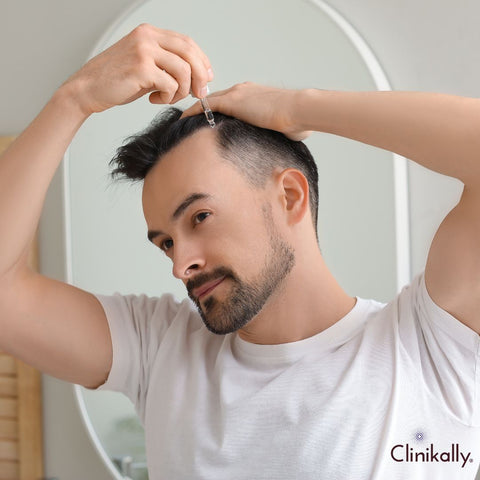
Topical finasteride and minoxidil spray are both hair loss treatments, but they work in very different ways.
-
Topical Finasteride: Finasteride is a medication that works by inhibiting the conversion of testosterone to dihydrotestosterone (DHT), a hormone that shrinks hair follicles and causes hair loss in people with a genetic predisposition. Topical finasteride is applied directly to the scalp as a solution or gel. By inhibiting DHT at the scalp level, it aids in the prevention of further hair loss and may promote hair growth.
-
Minoxidil Spray: Minoxidil is another medication for hair loss. It works by increasing blood flow to the scalp and stimulating hair follicles, which promotes hair growth. Minoxidil is available in a variety of formulations, including solutions, foams, and sprays. The spray formulation allows for simple application directly to the scalp.
Topical finasteride side effects
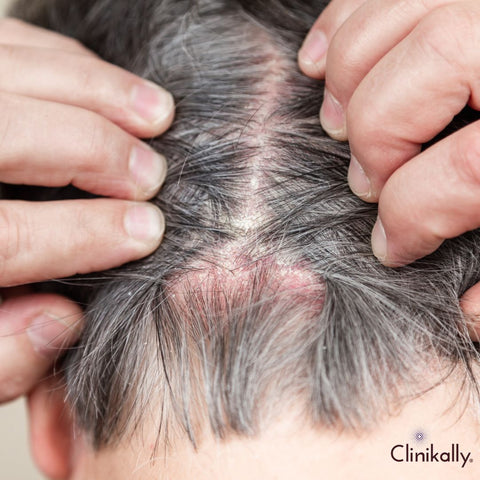
Topical finasteride, like its oral counterpart, can cause side effects, but they are usually less frequent and less severe when applied topically. Here are some of the possible side effects associated with topical finasteride:
-
Scalp Irritation: Some users may experience scalp irritation, redness, itching, or burning sensations at the application site. This is usually mild and resolves on its own with continued use or by changing the application frequency or dosage.
-
Sexual Side Effects: While topical finasteride is intended to have minimal systemic absorption, some people may experience sexual side effects such as decreased libido, erectile dysfunction, or changes in ejaculatory function. These side effects are less common with topical finasteride than with the oral form, but they can still occur in some cases.
-
Allergic Reactions: In rare cases, people may become allergic to the ingredients in the topical finasteride formulation. An allergic reaction may cause a rash, hives, swelling, or difficulty breathing. If you notice any signs of an allergic reaction, stop using the product and seek medical attention right away.
-
Other Side Effects: Topical finasteride may cause headache, dizziness, or breast tenderness. These side effects are uncommon and usually mild.
How to apply topical finasteride spray
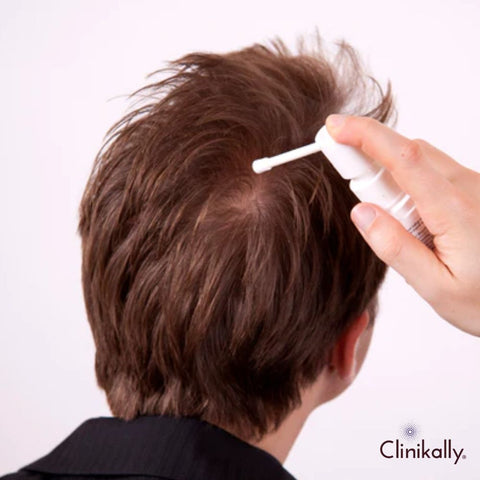
Topical finasteride spray is a medication used to treat hair loss. Here are the general steps for applying it:
-
Wash your hands thoroughly with soap and water.
-
Clean and dry the area of your scalp where you plan to apply the spray.
-
Shake the bottle well before use.
-
Hold the bottle upright and spray 1-2 pumps onto your scalp in the area of hair loss.
-
Gently massage the solution into your scalp with your fingers to ensure even distribution.
-
Wash your hands again after applying the spray.
-
Allow the solution to dry for a few minutes before styling your hair.
-
Avoid washing or wetting your hair for at least 4 hours after application to allow the medication to be absorbed into your scalp.
It is important to follow the instructions provided by your healthcare provider or the medication label carefully. Additionally, be sure to talk to your doctor if you have any questions or concerns about using topical finasteride spray.
Step-by-step guide on applying topical finasteride spray for maximum effectiveness
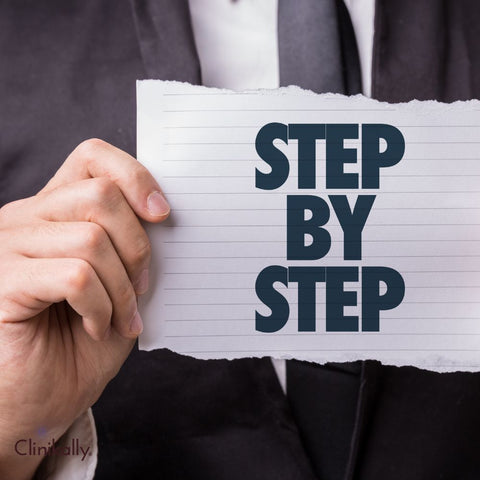
Here's a step-by-step guide to using topical finasteride spray for maximum effectiveness:
-
Start by carefully reading the instructions provided by the manufacturer of the topical finasteride spray. Pay close attention to the recommended dosage, frequency of application, and any specific instructions for use.
-
Before applying the spray, ensure that your scalp is clean and dry. You may choose to wash your hair with a mild shampoo and gently towel-dry it before application. Avoid using any other topical hair products immediately before or after applying the spray.
-
If the finasteride spray comes with a pump mechanism, prime the pump according to the manufacturer's instructions. This usually involves pressing the pump several times until the spray is primed and ready for use.
-
Hold the bottle of finasteride spray upright and position the nozzle close to the area of your scalp where hair loss is most evident. Depress the pump to release a fine mist of the spray onto the scalp. Move the nozzle around to cover the entire affected area evenly. Avoid spraying too much product in one spot, as this may cause excessive buildup or waste.
-
After applying the spray, gently massage your scalp with your fingertips for a few minutes. This helps to distribute the product evenly and ensures that it is absorbed into the scalp.
-
Allow the finasteride spray to air dry on your scalp. Avoid rubbing or touching the treated area until the product has fully dried.
-
After using the spray, thoroughly clean your hands with soap and water to remove any residue.
-
Apply the topical finasteride spray as directed by your doctor or according to the product instructions. It is typically used once a day or every other day, depending on the formulation and your individual needs.
-
Consistency is essential when using topical finasteride spray to treat hair loss. To maximise effectiveness, follow the recommended dosage and application schedule.
-
Keep track of your hair's growth and density/thickness changes over time. It may take several months to see noticeable results, so be patient and keep using the product as recommended.
Remember to consult your doctor before beginning any new hair loss treatment regimen, including topical finasteride spray. They can make personalised recommendations based on your specific requirements and medical history.
Tips for incorporating topical finasteride into your daily hair care routine
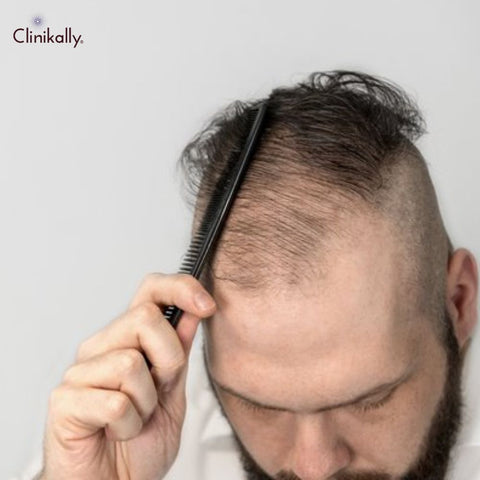
Topical finasteride can be easily incorporated into your daily hair care routine with proper planning and consistency. Here are some suggestions to help you seamlessly integrate it:
-
Choose a Convenient Time: Choose a time of day when you can apply topical finasteride without interruptions. Many people find it convenient to incorporate it into their morning or evening routine, such as after showering or before bed.
-
Establish a Routine: Consistency is essential when using topical finasteride. Set a specific time each day to apply the product, and stick to it. Incorporating it into your existing routine, such as brushing your teeth or applying moisturizer, can help make it a habit.
-
Keep it Visible: Place the topical finasteride spray or solution in a visible area where you'll notice it every day, such as on your bathroom counter or next to your skincare goods. This acts as a visual reminder to use it regularly.
-
Pair it with Other Products: Consider combining topical finasteride with other hair care products, such as shampoo and conditioner. This can help you streamline your routine and remember to use the product consistently.
-
Track Your Progress: Keep track of your hair's growth and density/thickness variations over time. Taking images regularly can help you track progress and establish the efficacy of the treatment.
-
Be Patient: Results from topical finasteride may take many months to appear, so be patient and continue the treatment plan. Avoid the temptation to skip applications or end them early.
-
Minimize Interference: Other topical hair products should not be used immediately before or after finasteride, since they may interfere with absorption. If you use styling products, do so once the topical finasteride has dried completely.
-
Consult with Your Healthcare Provider: If you have any questions or concerns about using topical finasteride in your daily regimen, speak with your doctor or a dermatologist. They can offer personalised advice and handle any unique issues you may have.
By following these guidelines and incorporating topical finasteride into your regular hair care routine, you may maximise its effectiveness and boost your chances of successfully treating hair loss.
Addressing common concerns and misconceptions about applying topical finasteride
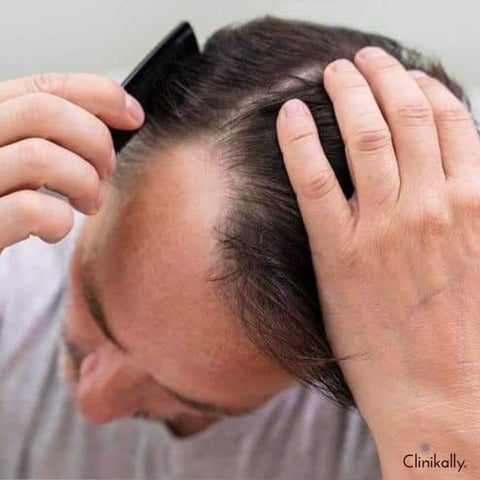
Addressing common concerns and misconceptions about topical finasteride application is critical to ensuring that patients feel informed and confident about using this treatment. Here are a few key points to discuss:
-
Systemic Side Effects: One of the most common concerns with finasteride, whether topical or oral, is the possibility of systemic side effects such as decreased libido and erectile dysfunction. However, topical finasteride is thought to have lower systemic absorption than oral finasteride, possibly lowering the risk of systemic side effects. It is important to note that, while systemic side effects are possible, they are uncommon and typically resolve after discontinuing the medication.
-
Effectiveness: Some people may question the efficacy of topical finasteride versus its oral counterpart. Topical finasteride has been shown in studies to be effective for treating hair loss, with improvements in hair density and thickness. While individual responses may vary, many people have reported positive results from topical finasteride when used consistently over time.
-
Application Technique: It is possible to have questions regarding how best to apply the product and whether or not it will be sufficiently absorbed. Reassure people that using the product correctly can help ensure maximum absorption and effectiveness. This includes distributing the product evenly over the scalp and gently massaging it in. Applying the product according to the manufacturer's instructions and any advice from medical professionals can also help allay worries about application methods.
-
Scalp Irritation: Some people may be concerned that topical finasteride may cause allergic reactions or irritation of the scalp. Although it is possible, most cases of scalp irritation are mild and temporary. The risk of irritation can be reduced by starting with a lower concentration or frequency of application and progressively increasing as tolerated. In addition, avoiding other hair products that might irritate the scalp and using a mild shampoo can help reduce discomfort in the scalp.
-
Safety: Issues with topical finasteride use over an extended period may give rise to safety concerns. Although topical finasteride's long-term safety is still being investigated, preliminary findings indicate that it has a good safety profile, especially when it comes to reducing the systemic side effects that come with oral finasteride. As with any medication, it is critical to assess the advantages and disadvantages and speak with a healthcare provider if you have any particular safety concerns.
By addressing these common concerns and misconceptions about applying topical finasteride, individuals can make more informed decisions about using this treatment for managing hair loss. Providing accurate information, reassurance, and support can make people feel more confident and empowered during their treatment journey.
Summarizing the key benefits of using topical finasteride for hair regrowth
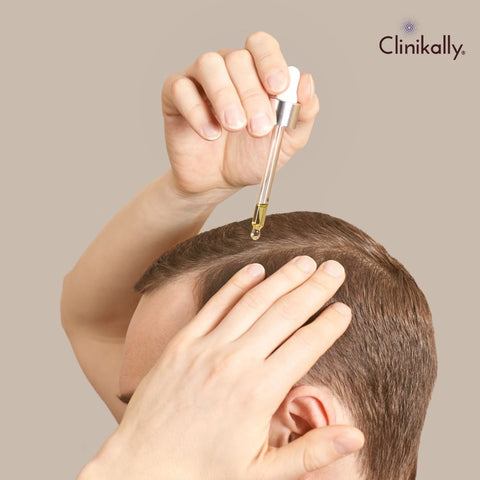
The main advantages of using topical finasteride for hair regrowth include:
-
Topical finasteride inhibits the enzyme 5-alpha-reductase, which reduces testosterone to dihydrotestosterone (DHT). Lowering DHT levels in the scalp tissue aids in slowing hair loss and promoting hair regrowth.
-
Topical finasteride has a more localised effect than oral finasteride, which affects DHT levels throughout the body. This localised action may lower the risk of systemic side effects from oral finasteride.
-
Topical finasteride has fewer systemic side effects than oral finasteride, including decreased libido and erectile dysfunction. This makes it a good choice for people who are concerned about systemic side effects.
-
Topical finasteride is typically applied directly to the scalp as a solution or foam. Its simple application makes it easy to incorporate into your daily hair care routine.
-
Topical finasteride may cause scalp irritation or itching in some people, but these side effects are usually minor and temporary. To improve tolerability, start with a low concentration or frequency of application and gradually increase as tolerated.
-
Clinical studies have demonstrated that topical finasteride can improve hair density, thickness, and overall hair regrowth. While individual responses may vary, many people have reported positive outcomes from consistent use over time.
Providing recommendations for individuals considering topical finasteride as a hair loss treatment option

Individuals considering topical finasteride as a hair loss treatment option should consider the following recommendations:
-
Consult with a Healthcare Professional: Before beginning any new hair loss treatment regimen, including topical finasteride, you should consult with a healthcare professional or dermatologist. They can assess your specific condition, medical history, and treatment goals to determine whether topical finasteride is appropriate for you.
-
Understand the Mechanism of Action: Learn about how topical finasteride works, as well as the potential benefits and risks. This will allow you to make an informed decision and set realistic expectations for treatment outcomes.
-
Consider Your Preferences and Lifestyle: When deciding whether to use topical finasteride as a treatment, keep convenience, application method, and potential side effects in mind. Choose a formulation that matches your preferences and integrates seamlessly into your daily routine.
-
Review the Evidence: Familiarise yourself with the scientific research that supports the efficacy and safety of topical finasteride for hair loss. Reviewing clinical studies and patient testimonials can provide useful information about the potential benefits and outcomes of treatment.
-
Begin with a Lower Concentration: If you are new to topical finasteride, start with a lower concentration to test your tolerance and reduce the risk of side effects. You can gradually increase the concentration or frequency of application as directed by your healthcare provider.
-
Be Patient and Consistent: It may take several months for topical finasteride to show results, so you must be patient and consistent with your treatment plan. To maximise effectiveness, follow the recommended dosage and application schedule.
-
Monitor Your Progress: Keep track of your hair's growth and any changes in density or thickness over time. Taking photos regularly can help you track progress and determine the efficacy of the treatment.
-
Be Open to Changes: If you have any side effects or concerns while using topical finasteride, please contact your healthcare provider. They can offer advice, adjust your treatment plan if necessary, or look into alternative options based on your specific needs.
By following these recommendations and working closely with a healthcare professional, individuals can make informed decisions about using topical finasteride as a hair loss treatment option and increase the likelihood of achieving positive results.
Discussing the importance of consulting a dermatologist before starting topical finasteride therapy
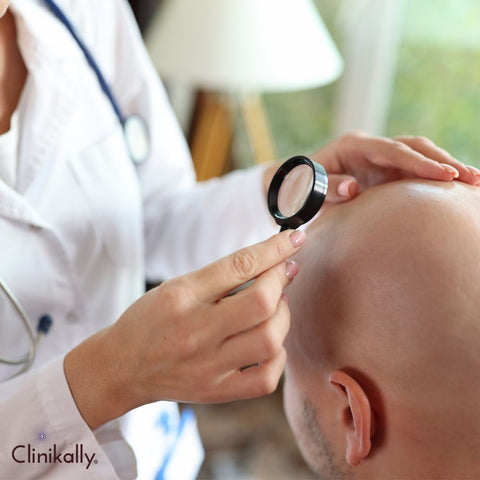
Consultation with a dermatologist before beginning topical finasteride therapy is critical for several reasons:
-
A dermatologist can accurately diagnose the cause of your hair loss and determine whether topical finasteride is a suitable treatment option. Different types of hair loss, such as androgenetic alopecia, alopecia areata, and telogen effluvium, may necessitate different treatments.
-
Your medical history, including any underlying illnesses, current medications, and prior hair loss treatments, will be examined by a dermatologist. This information aids in detecting potential contraindications or interactions with topical finasteride.
-
Based on your specific condition and medical history, a dermatologist can develop an individualized treatment plan tailored to your needs. They may recommend topical finasteride alone or in combination with other treatments for the best results.
-
A dermatologist can offer comprehensive advice on the appropriate use of topical finasteride, including amounts to take, how often to apply it, and how to apply it. They can also answer any worries or inquiries you might have regarding the course of treatment.
-
While topical finasteride is usually well tolerated, some people may experience scalp irritation or itching. A dermatologist can track your progress and address any side effects that may arise during treatment.
-
Hair loss is frequently a chronic condition that requires ongoing care. A dermatologist can offer ongoing support and guidance throughout your treatment journey, adjusting your regimen as needed to improve results and reduce side effects.
-
Consult a dermatologist to ensure that you are using topical finasteride correctly and effectively. They can help you set realistic treatment goals and make additional recommendations to promote hair growth, such as lifestyle changes or supplemental therapies.
Takeaway: Topical finasteride for hair loss
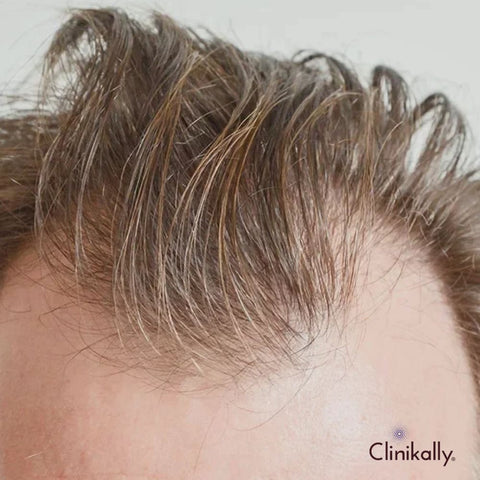
Topical finasteride is a medication that is used to treat hair loss in both men and women. It is a topical solution that is applied directly to the scalp and is designed to inhibit the production of the hormone dihydrotestosterone (DHT) in the scalp. DHT is believed to be a key factor in the development of male pattern baldness, and reducing its production can help to slow down or reverse the process of hair loss.
Topical finasteride works by blocking the action of the enzyme 5-alpha-reductase, which converts testosterone into DHT. By inhibiting the production of DHT, topical finasteride can help to reduce inflammation and promote hair growth.
One of the advantages of using topical finasteride is that it has fewer systemic side effects compared to oral finasteride. While oral finasteride can cause sexual side effects in some people, topical finasteride is less likely to cause these side effects because it is applied directly to the scalp and does not get absorbed into the bloodstream. However, it is important to note that there is still some risk of systemic side effects with topical finasteride, especially if it is used in high doses or if it is applied to broken or irritated skin. Common side effects of topical finasteride include scalp irritation, itching, and dryness.


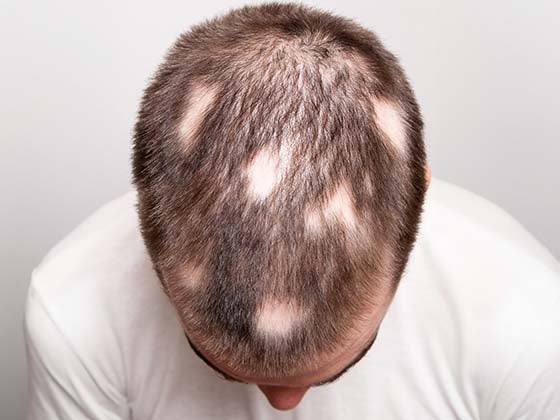
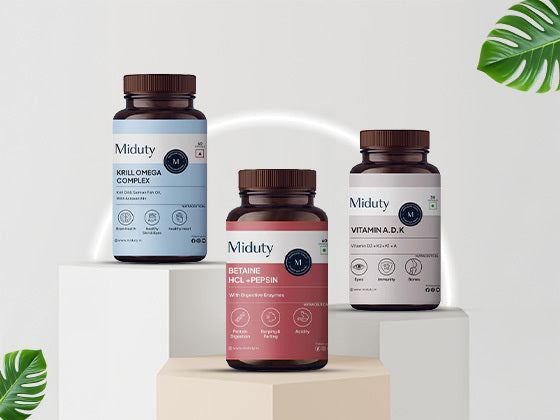




































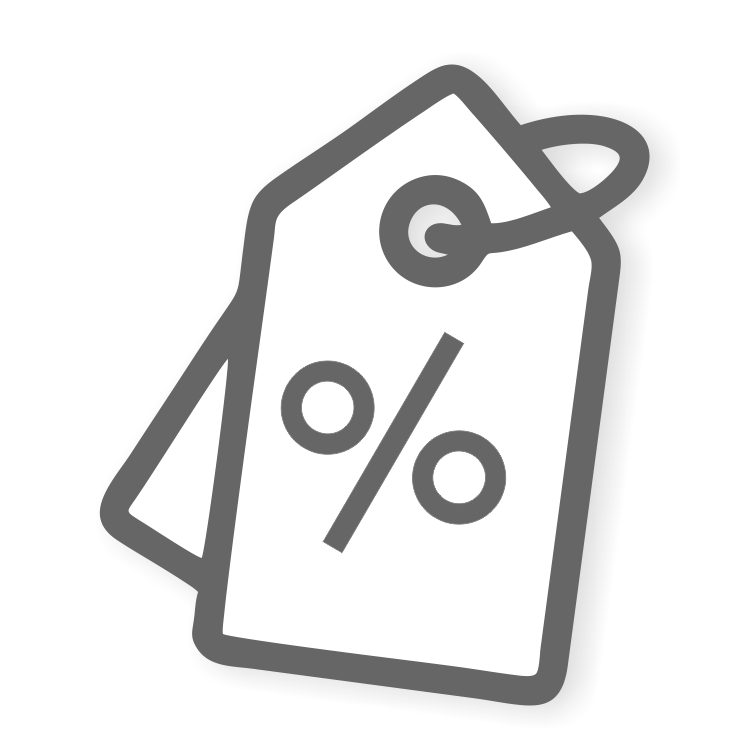
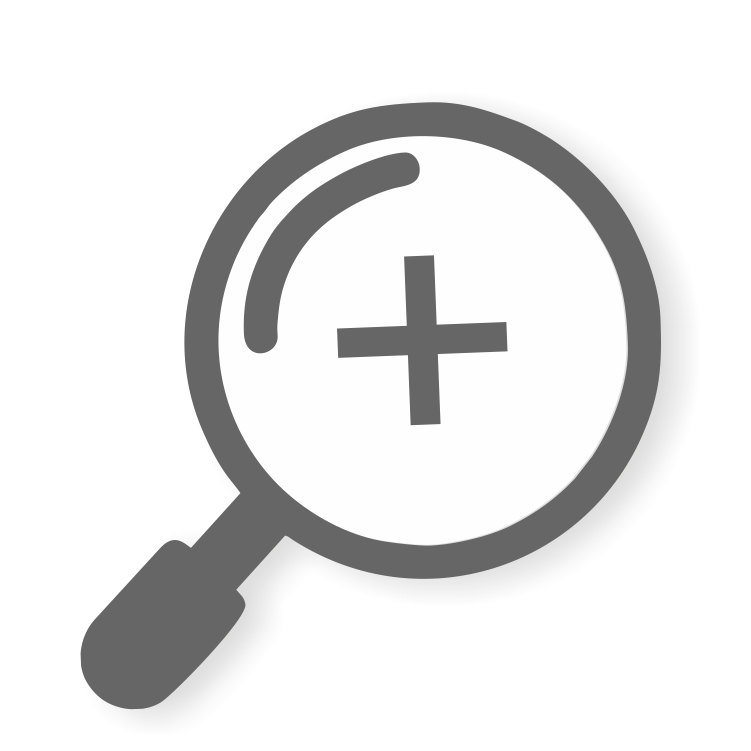
1 comment
Gareth Jones
Could you tell will finesteride work on me. At 79 years old. And quite a lot of hair loss over the years. I am also taking finesteride orally for anenlarged prostate.
Could you tell will finesteride work on me. At 79 years old. And quite a lot of hair loss over the years. I am also taking finesteride orally for anenlarged prostate.